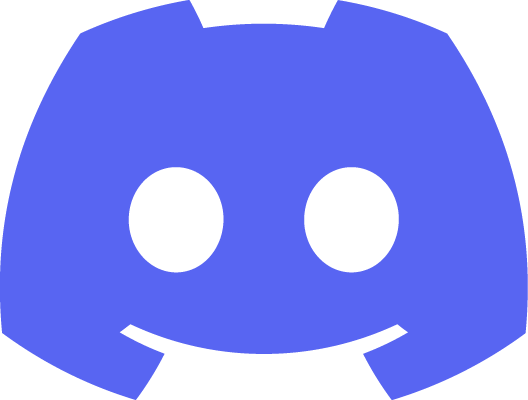Discord
Discord integration with Webflow enables automated workflows between your website and Discord communities. You can send form submissions to Discord channels, post notifications when CMS content updates, or embed Discord server widgets directly on your site.

How to integrate Discord with Webflow
Discord integration with Webflow sends form submissions to Discord channels, posts notifications when CMS content updates, or embeds Discord server widgets directly on your site. Automation platforms handle common workflows without code, while custom webhook implementations give you control over message formatting and real-time triggers.
You can use automation platforms like Zapier or Make for quick setup of form notifications and CMS alerts without writing code. You can embed Discord server widgets to display community activity directly on your site using HTML embed elements. Or, build custom integrations with webhooks when you need specific message formatting or integration with your backend services. Discord's webhook documentation provides setup instructions for direct API connections.
Use third-party automation platforms
Automation platforms provide Webflow-to-Discord connections without writing code. According to Zapier's Discord-Webflow integration, you can post Discord messages when Webflow forms are submitted, send channel notifications when CMS items are published, or sync e-commerce order data to Discord channels.
These platforms handle authentication, API connections, and data mapping through visual workflow builders. Setup takes minutes rather than hours of API integration work.
Some common automation workflows using Discord and Webflow include:
- Post to Discord channels when users submit Webflow forms with customizable message formatting
- Send notifications when new CMS items are published or updated
- Alert Discord channels about new orders or inventory changes
- Chain multiple actions together, as documented in n8n's Discord-Webflow integration
Zapier connects Webflow form submissions and CMS updates to Discord channels through pre-built templates. When a form is submitted in Webflow, Zapier formats the submission data and posts it to your Discord channel. n8n offers open-source flexibility with self-hosting options for custom Webflow-to-Discord workflows.
Make provides visual workflow debugging for complex Webflow event triggers that send formatted messages to Discord. Relay.app focuses on workflow automation that routes Webflow form data to Discord with human approval steps.
Each platform requires API credentials from both Webflow and Discord. Refer to Webflow's API documentation for accessing API keys and Discord's webhook documentation for generating webhook URLs.
Embed Discord server widgets
Discord provides server widgets that display community activity directly on Webflow sites. Server administrators enable widgets through Discord server settings, then embed the generated code into Webflow using custom Code Embed elements.
Add the Discord widget code to your Webflow page through the Code Embed element. Configure sizing, theme options, and displayed information through the widget settings.
Widget capabilities include:
- Display server member count and online status
- Show active voice channels and current participants
- Enable instant join functionality for visitors
- Customize appearance with light and dark themes
Server administrators control widget availability and displayed information through Discord server settings. Enable the Discord server widget through your server settings to generate embed codes. Refer to Discord's server settings documentation for widget configuration options.
The Elfsight Discord widget provides enhanced customization options beyond standard Discord widgets, including positioning controls, custom styling, and responsive behavior configuration.
Build with Webflow and Discord APIs
Discord's webhook system provides a direct method for sending messages to channels without full bot authentication. Webhooks are URLs that accept POST requests with message content and formatting instructions.
Custom webhook integrations give you control over message timing, content structure, and trigger logic. Connect Webflow form submissions, CMS webhooks, or e-commerce events directly to Discord channels through server-side code or edge functions.
Some implementation approaches include:
- Build server-side functions that receive Webflow form data through the Webflow API and format it for Discord webhook URLs
- Send messages to Discord based on Webflow events detected through webhooks
- Use Discord webhooks to send immediate updates when specific site actions occur
The Discord Developer Portal provides complete API specifications for webhook implementations. Start with webhooks for message posting, then expand to full API integration when you need message management, user interaction, or server data access.
Send form submissions to Discord channels
Connect Webflow form submissions to Discord channels through automation platforms or custom server-side code. Automation platforms like Zapier and Make monitor form submissions through Webflow's API and forward the data to Discord webhook URLs with customizable formatting.
For custom implementations, use external server functions to process form data and send POST requests to Discord webhook URLs. Generate a Discord webhook URL through your Discord server settings. Discord's webhook documentation provides instructions for creating webhooks in your server channels.
Format message content by structuring your POST body with Discord's expected JSON schema. Include form field values in the message content, customize username and avatar properties, or add rich embeds with color coding and field organization.
Note that Webflow doesn't provide direct HTTP API access to form submissions. You'll need to use either Webflow's webhook system to forward submissions to your server or rely on automation platforms to access form data.
Sync CMS updates to Discord communities
Monitor Webflow CMS updates and notify Discord communities through automation platforms or webhook implementations. Platforms like n8n and Make can monitor CMS collections through Webflow's API and trigger Discord notifications when items are created, updated, or deleted.
For custom implementations, use Webflow's webhook system to detect CMS changes and trigger notifications to Discord channels. Process CMS data through server-side functions that format the information for Discord's API. CMS data includes item field values, publication status, and timestamps that can be formatted into structured Discord messages.
Keep in mind that Webflow's API has rate limits of 60-120 requests per minute depending on your plan. Webhook-based approaches work better than continuous polling for monitoring CMS changes in production environments.
What you can build
Integrating Discord with Webflow enables real-time communication workflows, automated community management, and synchronized content distribution between your website and Discord servers.
- Form response automation: Build contact forms, event registrations, or support request pages that post submissions to Discord channels so team members can respond immediately without checking email or form dashboards
- Content publication notifications: Create blog publishing workflows where new CMS articles post announcements to Discord community channels with article titles, excerpts, and direct links to drive traffic from engaged community members
- E-commerce order tracking: Build online stores that send order confirmations, shipping updates, and inventory alerts to private Discord channels to give your operations team real-time visibility into business activity
- Community-driven content: Develop feedback portals or suggestion pages that post user submissions to Discord channels where community moderators can review, discuss, and approve content before it appears on your Webflow CMS
Frequently asked questions
Send Webflow form submissions to Discord channels using automation platforms like Zapier or custom server-side code. Automation platforms monitor form submissions through Webflow's API and forward data to Discord webhook URLs. Generate a Discord webhook URL as described in Discord's webhook documentation.
The Discord webhook documentation describes webhooks as a low-effort way to post messages to channels that do not require a bot user or authentication to use.
For automated setup without custom code, Zapier's Discord-Webflow integration provides pre-built workflows that connect form submissions to Discord messages with field mapping and message formatting options.
Discord webhooks are simple URLs that accept POST requests to send messages to specific channels without authentication. According to the Discord webhook documentation, webhooks provide a low-effort method for posting messages that doesn't require bot users or OAuth authentication.
The full Discord API requires authentication and provides broader capabilities including message management, user interaction, server data access, and real-time event subscriptions.
The Discord Developer Portal documents that Discord apps use two core layers: a HTTPS/REST API for general operations and a WebSocket-based Gateway API for real-time events. Choose webhooks for simple message posting, use the full API when you need bidirectional communication or message management.
Enable the Discord server widget through your Discord server settings to generate embed code. Add the widget code to your Webflow page using Webflow's HTML embed functionality.
Configure widget appearance, displayed channels, and member visibility through Discord server settings before embedding. The Elfsight Discord widget for Webflow provides enhanced customization options including positioning controls, custom styling, and responsive design configuration beyond standard Discord widgets.
Platform choice depends on your technical requirements and workflow complexity. Zapier provides the most straightforward setup with pre-built templates that connect Webflow form submissions directly to Discord channel messages, making it ideal for non-technical users who need to route form data (name, email, message fields) to specific Discord channels.
n8n offers open-source flexibility with self-hosting options and custom node creation for advanced Webflow-to-Discord workflows. Make includes visual debugging for complex scenarios where multiple Webflow triggers (forms, CMS updates, e-commerce events) route to different Discord channels with conditional logic.

Description
Discord is a real-time communication platform that provides organized server-based communities with text, voice, and video capabilities.
This integration page is provided for informational and convenience purposes only.

Connect Facebook's powerful social and advertising ecosystem with Webflow to unlock advanced conversion tracking, social authentication, dynamic product ads, and seamless customer engagement across web and social channels.

EmbedSocial
Transform your Webflow site into a dynamic social hub by embedding Instagram feeds, Google reviews, and user-generated content. Build trust with authentic social proof while automating content updates and increasing engagement through customizable widgets that sync in real-time.

EmbedAlbum (by EmbedSocial)
Display dynamic photo albums from Facebook, Instagram, and other social platforms on your Webflow site. Create auto-updating galleries that showcase social proof, build trust, and keep content fresh without manual updates.

Elfsight Instagram Feed Plugin
Transform your Webflow website into a dynamic social hub by integrating live Instagram content through Elfsight's Instagram Feed Plugin. This integration enables automatic display of your latest Instagram posts, user-generated content, and hashtag campaigns directly on your website — all without writing a single line of code.

Elfsight Facebook Feed Widget
Display dynamic Facebook content on your Webflow site with the Elfsight Facebook Feed Widget. Show posts, photos, videos, and albums from your Facebook page or profile directly on your website to boost engagement, build trust, and keep visitors updated with your latest social media activity — all without coding.


